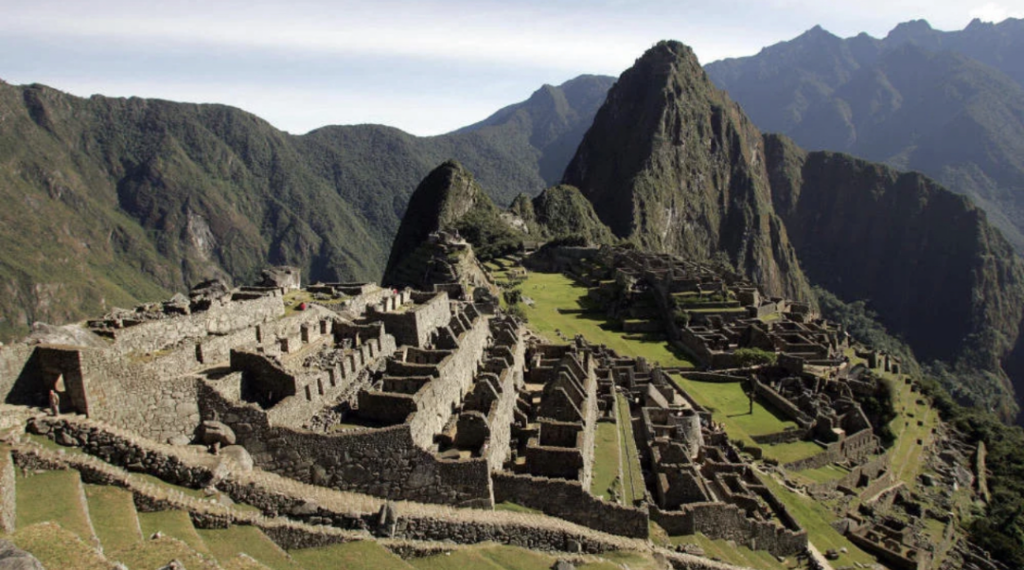By Sofia Slavonia
Machu Picchu, the iconic 15th-century Inca citadel perched high in the Andes of southern Peru, has always been shrouded in historical mystery. Recently, a study led by Yale archaeologist Richard Burger has unveiled an unexpected revelation: Machu Picchu is decades older than previously believed. This revelation was achieved through the application of absolute dating techniques, specifically radiocarbon dating methods, offering insights that challenge established historical narratives and underscore the crucial role of dating in archaeology.
Historical records had previously suggested that Machu Picchu (Figure 1) was constructed around A.D. 1440, during the reign of Inca Emperor Pachacuti. However, the findings of Burger’s team tell a different story. They employed accelerator mass spectrometry (AMS), a sophisticated form of radiocarbon dating, to examine human remains unearthed at the site during early 20th-century excavations. Essentially, by measuring the remaining carbon-14 in a sample and comparing it to stable carbon isotopes (Renfrew 2018), archaeologists can determine the age of organic materials (Figure 2).

The results of this scientific endeavor reveal a remarkable truth: Machu Picchu was occupied from approximately A.D. 1420 to A.D. 1530. This discovery extends the site’s age by at least 20 years, bringing into question established notions of Inca chronology. According to Burger, “The results suggest that the discussion of the development of the Inca empire based primarily on colonial records needs revision” (Cummings 2021).

In conclusion, Machu Picchu’s reevaluated age challenges preconceived notions and underscores the importance of dating methods in archaeology. These findings not only impact our understanding of Machu Picchu but also shed light on the broader context of Inca history. It implies that Inca Emperor Pachacuti began his conquests decades earlier than previously thought, signifying a shift in the timeline of Inca expansion. In essence, dating techniques in archaeology serve as the bedrock upon which our comprehension of the past is built. They allow us to peer through the veil of time and uncover the mysteries that have long eluded us, ultimately reshaping our perceptions of history. As we continue to refine our dating methods, we can look forward to even more revelations that will challenge our assumptions and broaden our understanding of the ancient world.
Reference List:
Cummings, Mike. 2021. “Machu Picchu Older than Expected, Study Reveals.” YaleNews, August 5, 2021.
Renfrew, Colin, and Paul Bahn. 2018. Archaeology Essentials: Theories, Methods, and Practice. Fourth edition: 123-126. Thames & Hudson
Photo Sources:
Figure 1. Orson, Diane. December 15, 2010. “Yale Returns Machu Picchu Artifacts to Peru.” NPR.
Figure 2. “Research School of Earth Sciences.” Radiocarbon dating: background | ANU Research School of Earth Sciences. https://earthsciences.anu.edu.au/research/facilities/anu-radiocarbon-laboratory/radiocarbon-dating-background.
Additional Content:
If you’re interested in learning more about radiocarbon dating visit this page: https://earthsciences.anu.edu.au/research/facilities/anu-radiocarbon-laboratory/radiocarbon-dating-background
If you’re interested in learning more about Machu Picchu’s history visit this page: https://www.history.com/topics/south-america/machu-picchu

“This discovery extends the site’s age by at least 20 years, bringing into question established notions of Inca chronology. According to Burger, ‘The results suggest that the discussion of the development of the Inca empire based primarily on colonial records needs revision’ (Cummings 2021).”
— How might this seemingly trivial difference in time contribute to the decolonization of archaeology? What alternative narrative does it provide in relation to/comparison with/addition to the colonist record?
The revelation that Machu Picchu is around 20 years older challenges the colonial records that have long shaped the narrative of Inca history. It contributes to the decolonization of archaeology by highlighting the importance of indigenous perspectives and oral traditions, which might offer alternative narratives that challenge the Eurocentric colonial accounts of the past.